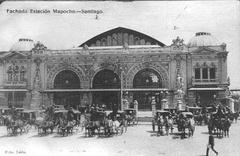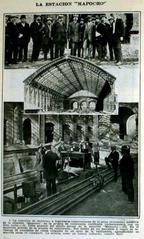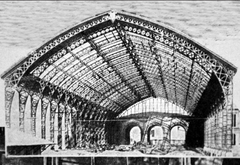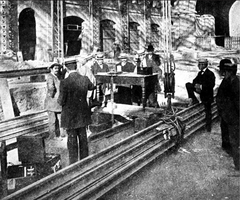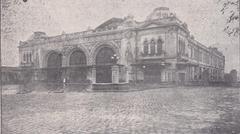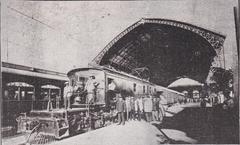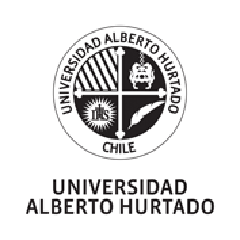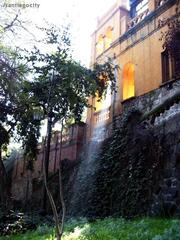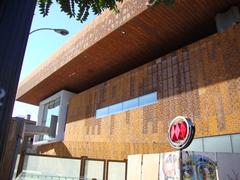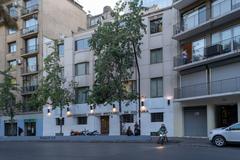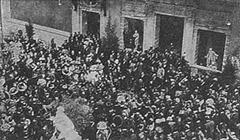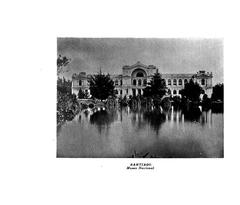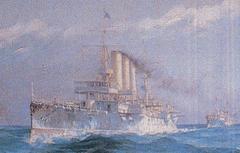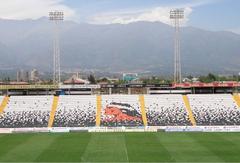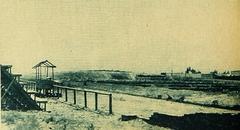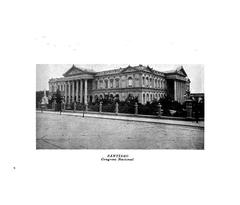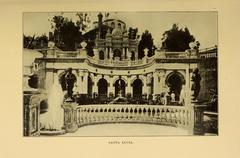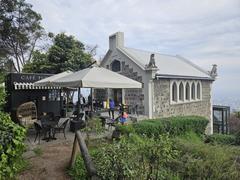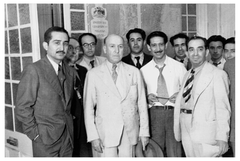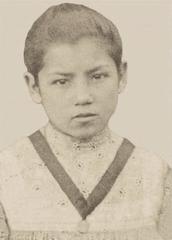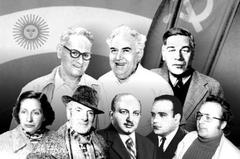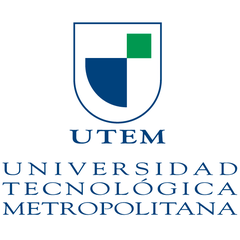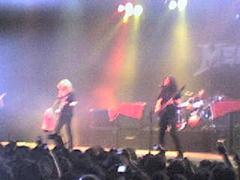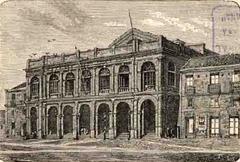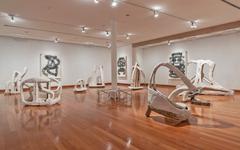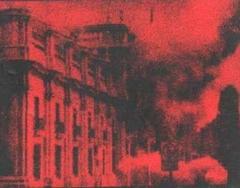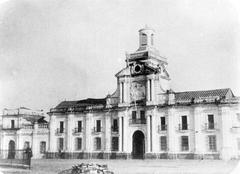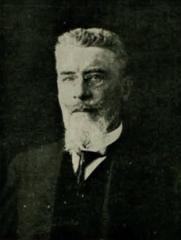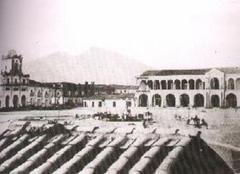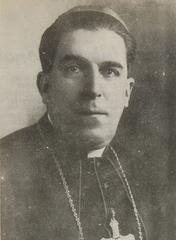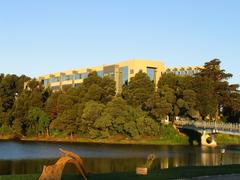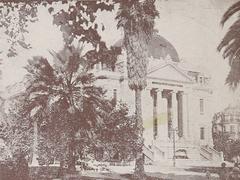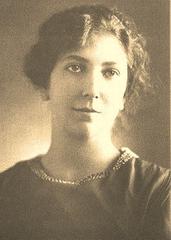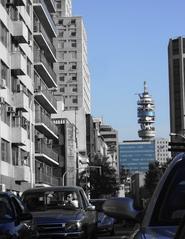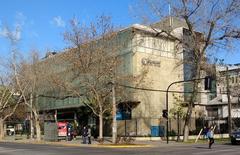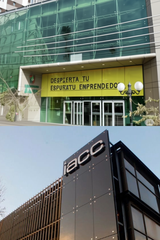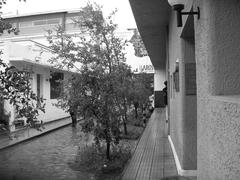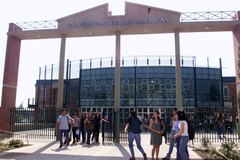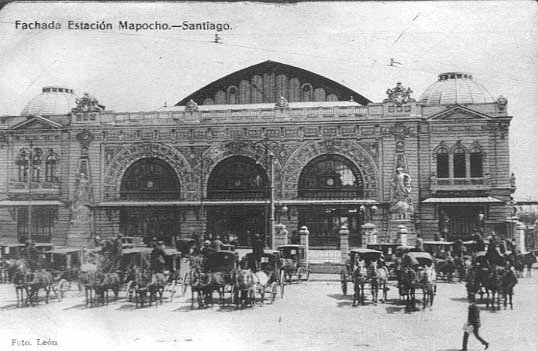
Estación Mapocho Visiting Hours, Tickets, and Santiago Historical Sites Guide
Date: 14/06/2025
Introduction
Estación Mapocho Cultural Center is one of Santiago, Chile’s most emblematic historical landmarks, uniquely fusing neoclassical architectural grandeur with a vibrant contemporary cultural scene. Originally inaugurated in 1913 as a railway station designed by Emilio Jecquier, its vast iron and glass roof and elegant façade remain an engineering marvel. Following meticulous restoration in the 1990s, Estación Mapocho has become a dynamic cultural hub, hosting major events such as the Santiago International Book Fair, exhibitions, concerts, and community programs. Its central location by the Mapocho River, accessibility, and diverse programming make it a must-visit for anyone exploring Santiago’s historical sites.
Whether you are interested in architectural heritage, Chilean arts, or immersive cultural experiences, this guide provides all the essential information: visiting hours, ticketing, amenities, accessibility, travel tips, nearby attractions, and answers to frequently asked questions. For the latest updates, always refer to the official Estación Mapocho website and trusted tourism sources (foodandtravelutsav.com, tradefairdates.com).
Table of Contents
- Introduction
- Architectural Heritage and Restoration
- Cultural Significance and Events
- Visitor Information: Hours, Tickets, and Access
- Amenities and Nearby Attractions
- Sustainability and Community Engagement
- Visiting Tips
- Frequently Asked Questions (FAQ)
- Conclusion and Next Steps
- References
Architectural Heritage and Restoration
Neoclassical Grandeur and Engineering
Estación Mapocho exemplifies early 20th-century neoclassical architecture, blending local stone with imported Belgian steel. Inspired by European railway stations—especially those in France—it features a sweeping iron and glass vault over 150 meters long and 22 meters high, creating a luminous, column-free interior. The symmetrical façade, arched windows, and ornate details showcase Chile’s commitment to progress and modernity during the centenary of independence (foodandtravelutsav.com).
Restoration and Adaptive Reuse
With the decline of rail travel, the station closed in 1987 but was saved from dereliction through a landmark restoration completed in 1994. The process preserved its neoclassical character while adapting it for exhibitions, performances, and cultural events. Original ironwork, stained glass, and stonework were restored, and modern amenities were seamlessly integrated. This adaptive reuse is celebrated as a model for heritage conservation in Latin America (tradefairdates.com).
Cultural Significance and Events
Estación Mapocho has become an epicenter for Chilean arts and cultural exchange. Its versatile spaces host:
- Annual Santiago International Book Fair (FILSA): Attracts hundreds of publishers and over 300,000 visitors.
- Art exhibitions, music concerts, and theater performances
- Community events, educational workshops, and debates
- International fairs and expos, bringing global artists and audiences together
The center’s programming is diverse, with free entry to most exhibitions and affordable tickets for special events. Its mission is to make culture accessible, foster dialogue, and support both established and emerging talents.
Visitor Information: Hours, Tickets, and Access
Visiting Hours
- General Hours: Daily, 10:00 a.m. to 8:00 p.m.
- Event Hours: Some events may have different schedules. Always check the official Estación Mapocho website or event listings for details.
Tickets
- General Admission: Free entry to public areas and most exhibitions.
- Special Events: Some performances, fairs, or exhibitions require tickets (usually moderately priced). Tickets can be purchased online or at the venue.
- Guided Tours: Offered during certain events or by appointment. Check the website for availability.
How to Get There
- Address: Plaza de la Cultura, downtown Santiago, Chile.
- Metro: Adjacent to Cal y Canto station (Line 2).
- Bus/Taxi: Well-served by city buses and taxis.
- Parking: Limited on-site; nearby public parking lots available.
Accessibility
- Ramps and Elevators: The building is wheelchair accessible.
- Assistance: Staff are available to help visitors with disabilities.
- Restrooms: Accessible facilities provided.
Amenities and Nearby Attractions
- Restrooms, cloakrooms, and a café
- Gift shop: Available during larger events and fairs
- Photography: Allowed in most public areas; restrictions may apply during specific exhibitions or performances
- Nearby restaurants: Options like El Huerto for organic and vegetarian cuisine
- Close by: Mercado Central, Bellavista, Parque Quinta Normal, La Vega market, National History Museum, Museum of Memory and Human Rights, Gabriela Mistral Cultural Centre, La Chascona (Pablo Neruda’s home)
Sustainability and Community Engagement
Estación Mapocho’s adaptive reuse not only preserved its architectural heritage but also reduced environmental impact by avoiding demolition and new construction. The center collaborates with local artists, schools, and community organizations, hosting educational programs, debates, and events addressing contemporary issues. Management by the Ministry of Culture and local organizations ensures it remains a space for diverse voices and public participation.
Visiting Tips
- Plan ahead: Check the event schedule and ticketing requirements on the official website.
- Arrive early: Popular events draw large crowds.
- Comfort: Wear comfortable shoes; bring cash and cards for vendors.
- Language: Most events are in Spanish—translation apps may help.
- Combine your visit: Explore nearby Santiago historical sites for a rich cultural itinerary.
- Safety: The area is lively by day; exercise usual precautions after dark.
Frequently Asked Questions (FAQ)
Do I need to buy tickets to visit Estación Mapocho?
General admission is free; tickets are only required for certain events.
What are the visiting hours?
Open daily from 10:00 a.m. to 8:00 p.m., though special events may have different times.
Is Estación Mapocho accessible for people with disabilities?
Yes—ramps, elevators, and accessible restrooms are available.
How do I get there using public transport?
Take the metro to Cal y Canto station or use nearby bus routes.
Are guided tours available?
Yes, during some events or by appointment. Check online for schedules.
Can I take photographs inside?
Non-flash photography is generally allowed in public areas; certain events may have restrictions.
What other historical sites are nearby?
Mercado Central, La Vega, Parque Quinta Normal, Museum of Memory and Human Rights, and more.
Conclusion and Next Steps
Estación Mapocho Cultural Center is a remarkable blend of historical preservation and contemporary cultural energy. Its accessible location, free general admission, and dynamic programming make it an essential destination for anyone interested in Santiago’s past and present. To maximize your visit, plan ahead using up-to-date event and ticketing information from the official Estación Mapocho website.
Enhance your experience:
- Download the Audiala app for audio tours and cultural updates.
- Follow Estación Mapocho and Audiala on social media for news on festivals, exhibitions, and special programs.
- Explore related Santiago historical sites for a comprehensive cultural journey.
Suggested Visuals and Media
- High-quality images of Estación Mapocho’s iron and glass architecture (optimized with alt tags such as “Estación Mapocho visiting hours” and “Santiago historical sites”)
- Interactive maps showing the center’s location and nearby attractions
- Virtual tours or multimedia from the official website or event organizers
References and External Links
- Must Visit Attractions in Santiago, 2024, Food and Travel Utsav
- Centro Cultural Estación Mapocho Event Venue Details, 2024, Trade Fair Dates
- Official Estación Mapocho Cultural Center Website, 2024
